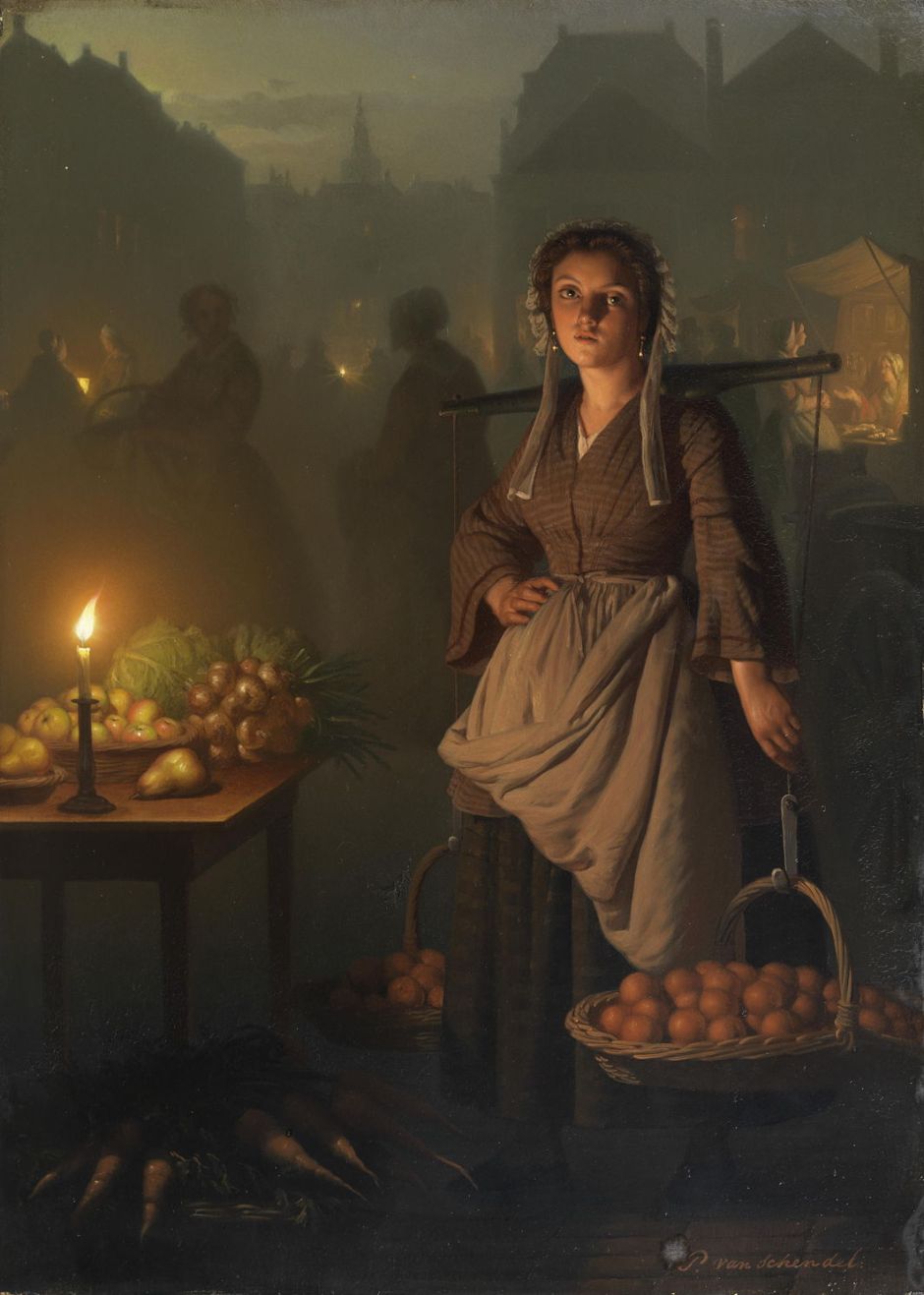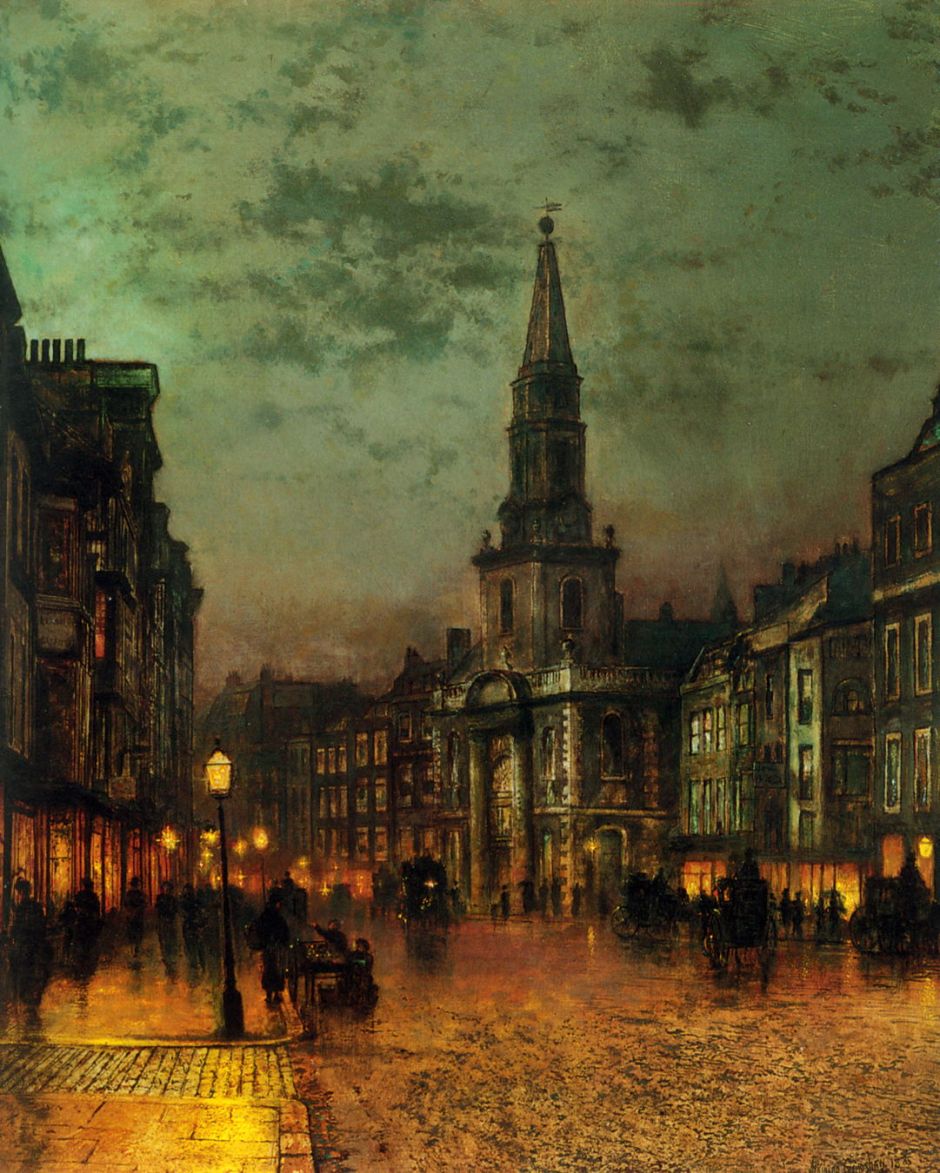Now we’re well past the equinox, in the northern hemisphere dark nights are significantly longer than the daylight. It’s a time when we come to rely ever more on artificial light, and when our streets are lit longer. Parts of our cities have had lighting since classical times, when the Greeks and Romans put oil lamps and burning brands in front of some buildings. Lanterns came into use in the sixteenth century, but it wasn’t until the early nineteenth century that bright gas lights started to light up city streets.

In many towns and cities, even well into the latter half of the nineteenth century, candles were still widely used to light outdoor events, such as Petrus van Schendel’s Market by Candlelight (1865). This painting captures well the resulting soft, romantic glow, and the hazy atmosphere which was a common accompaniment.

Smaller towns and villages remained essentially unlit, as seen in Johan Barthold Jongkind’s nocturne View of Overschie in Moonlight from 1872.

Whistler captures this well in his Nocturne: Blue and Gold — Southampton Water painted in 1872. Its vague blue-greys make the pinpoints of light and the rising sun shine out in contrast.

Areas which did enjoy the benefit of early street lighting were barely lit up by modern standards. John Atkinson Grimshaw was one of the few specialist nocturne painters of the late nineteenth century, and this view of Whitby from Scotch Head, Moonlight on the Esk shows the feeble street lights of 1879.

Two years later, Grimshaw travelled to Scotland, where he painted Shipping on the Clyde in 1881, showing the waterfront in the city of Glasgow in wet weather. These gaslights are supplemented by indoor lighting spilling onto the streets from bars and restaurants.

The road and its occupants are bathed in a warm mixture of gaslight and oil lamps in Grimshaw’s Blackman Street, London from 1885. This is on the south bank of the River Thames, not far from Borough.

Vincent van Gogh’s Starry Night over the Rhône from 1888 gives an idea of the relative brightness of the stars above and the artificial lighting around the shores below. In many places these days, the latter would be so dazzling that the stars would be hard to discern.

Lesser Ury’s night scene in Leipziger Straße, Berlin, painted the following year, shows the brighter lights of the cities, but they remained relatively dark until the arrival of electric arc lights at the end of the nineteenth century.

